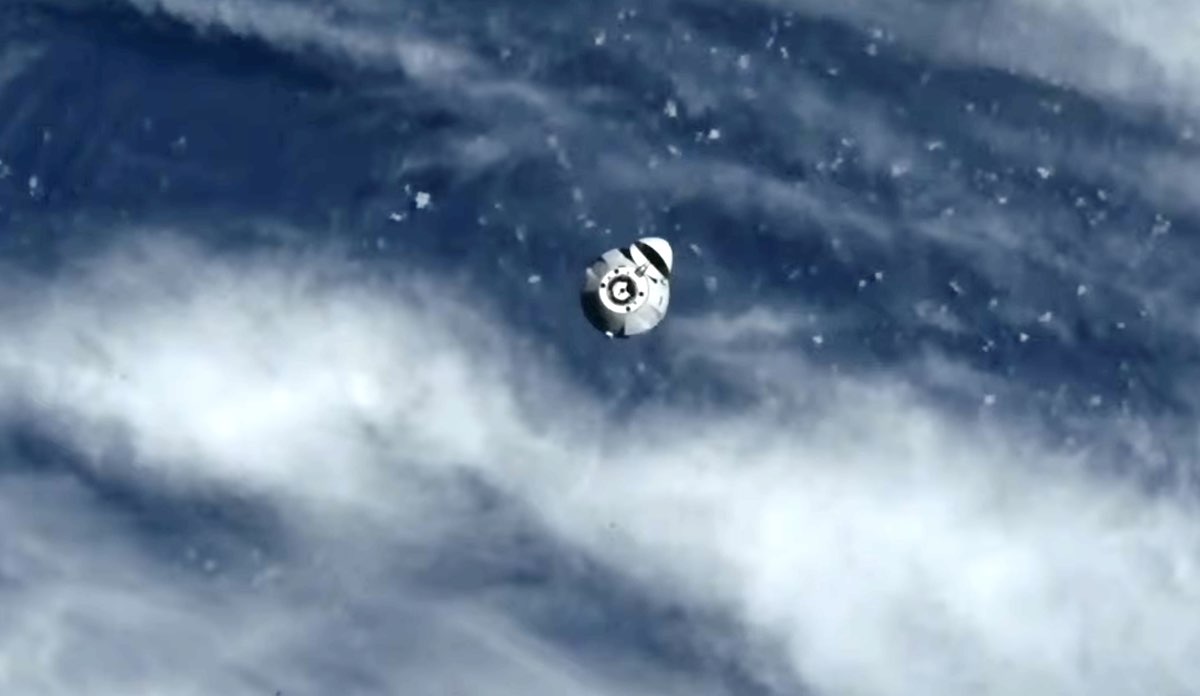
A day after launching from Kennedy Space Center, SpaceX’s Dragon cargo capsule approached the International Space Station for an automated docking Sunday with more than 7,700 pounds of supplies and experiments.
The Dragon supply ship autonomously linked up with the zenith, or space-facing, docking port on the space station’s Harmony module at 7:39 a.m. EST (1239 GMT) Sunday to wrap up a 17-hour pursuit of the complex. The cargo capsule launched at 2:20 p.m. EST (1920 GMT) Saturday on top of a Falcon 9 rocket.
The mission marks SpaceX’s 26th resupply flight since 2012 to deliver cargo to the space station, and is the first flight of SpaceX’s newest Cargo Dragon capsule, designated Dragon C211. This is the final reusable Cargo Dragon spacecraft SpaceX plans to build to meet NASA’s cargo transportation needs for the station through 2030.
The CRS-26 mission is packed with hardware, supplies, and experiments for the space station and the seven-person crew living on-board the complex. The largest element of the cargo load is NASA’s second pair of new roll-out solar arrays to augment the space station’s power system.
NASA astronauts Nicole Mann and Josh Cassada on-board the space station monitored the Dragon spacecraft’s automated rendezvous, ready to send commands to the capsule to hold its approach or abort the docking in the event of a problem.
After docking Sunday, astronauts on the space station will open hatches and begin unpacking cargo inside the pressurized compartment of the Dragon spacecraft.
Among the food inside: Ice cream, spicy green beans, cranapple desserts, almond pumpkin pie, and candy corn for a belated Thanksgiving feast.
Two new ISS Roll-Out Solar Arrays, or iROSA units, are packed inside Dragon’s unpressurized trunk cargo bay to upgrade the space station’s power system. Astronauts on the station will venture outside the complex next month to help install and deploy the new roll-out arrays, which will augment power produced by the station’s original solar arrays. The existing solar array wings launched on space shuttle missions between 2000 and 2009.
Built by Redwire, the solar arrays are rolled up on spools like yoga mats during launch. The space station’s robotic arm will remove the spools from their mounting posts inside the Dragon spacecraft’s rear cargo bay and move them to attachment points on the lab’s left-side and right-side solar power truss.
The roll-out solar panels will open up to partially cover the existing arrays. This pair of iROSA units follows the launch of the first two in 2021. The final two roll-out solar arrays are scheduled to launch on a SpaceX resupply mission next year.
Other cargo on the CRS-26 mission includes experiments to test the growth of dwarf tomatoes on the space station, a portable hand-held microscope that will help astronauts collect medical imagery of their own blood samples, and a technology demonstration to gather data on the construction of flexible structures in space.
There are also eight CubeSats developed by teams in Brazil, United States, Canada, Italy, and Taiwan on-board the Dragon capsule. Astronauts will remove the small satellites from their cargo containers and place them in the Japanese Kibo lab for transfer outside the station through an airlock. The CubeSats will be released into orbit using a Nanoracks deployer mechanism.
The Dragon spacecraft will remain docked at the space station for about a month-and-a-half before departing the research outpost in mid-January for a parachute-assisted splashdown off the coast of Florida.
Here’s a breakdown of the CRS-26 cargo manifest, provided by NASA:
• Total Cargo: 7,777 pounds (3,528 kilograms)
- 2,636 pounds (1,196 kilograms) of unpressurized payloads (iROSA)
- 2,341 pounds (1,062 kilograms) of crew supplies
- 2,066 pounds (937 kilograms) of science investigations
- 653 pounds (296 kilograms) of vehicle hardware
- 55 pounds (25 kilograms) of spacewalk equipment
- 26 pounds (12 kilograms) of computer resources
Email the author.
Follow Stephen Clark on Twitter: @StephenClark1.
from Spaceflight Now https://ift.tt/liIWB5g
via World Space Info







0 comments:
Post a Comment